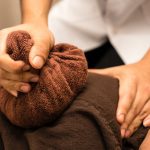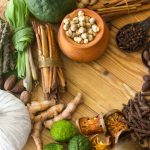- 🌿 Introduction —The Magic of Thai Herbal Teas
- 🌱 What Are Thai Herbal Teas? A Cultural & Botanical Primer
- 🌺 Top 7 Thai Herbal Teas + Their Powerful Benefits
- 1. Nam Dok Anchan (Butterfly Pea Tea) — The Brain & Beauty Brew
- 2. Lemongrass-Ginger-Turmeric Elixir — The Immunity Trio
- 3. Bael Fruit Tea — The Digestive Dynamo
- 4. Roselle (Hibiscus) Tea — The Heart Helper
- 5. Pandan Leaf Infusion — The Stress Soother
- 6. Krachai (Fingerroot) Tea — The Joint & Muscle Mender
- 7. Plai + Turmeric Blend — The Pain Relief Potion
- 🫖 How to Make Authentic Thai Herbal Tea at Home (Step-by-Step!)
- 🙏 Thai Herbal Tea Traditions: Rituals, Seasons & Healing Wisdom
- 🛒 Where to Buy & Best Thai Herbal Tea Brands to Try
- 🌅 Conclusion — Sip the Spirit of Thailand
- 🧐 FAQs About Thai Herbal Teas
🌿 Introduction —The Magic of Thai Herbal Teas
There’s something almost sacred about the first sip of a warm, golden-hued Thai herbal infusion — fragrant lemongrass dancing with earthy turmeric, butterfly pea flowers swirling into a deep indigo elixir, the whisper of ginger and pandan leaves calming your spirit. Thai herbal teas aren’t just drinks. They’re liquid remedies, cultural heirlooms, and daily rituals passed down through generations.
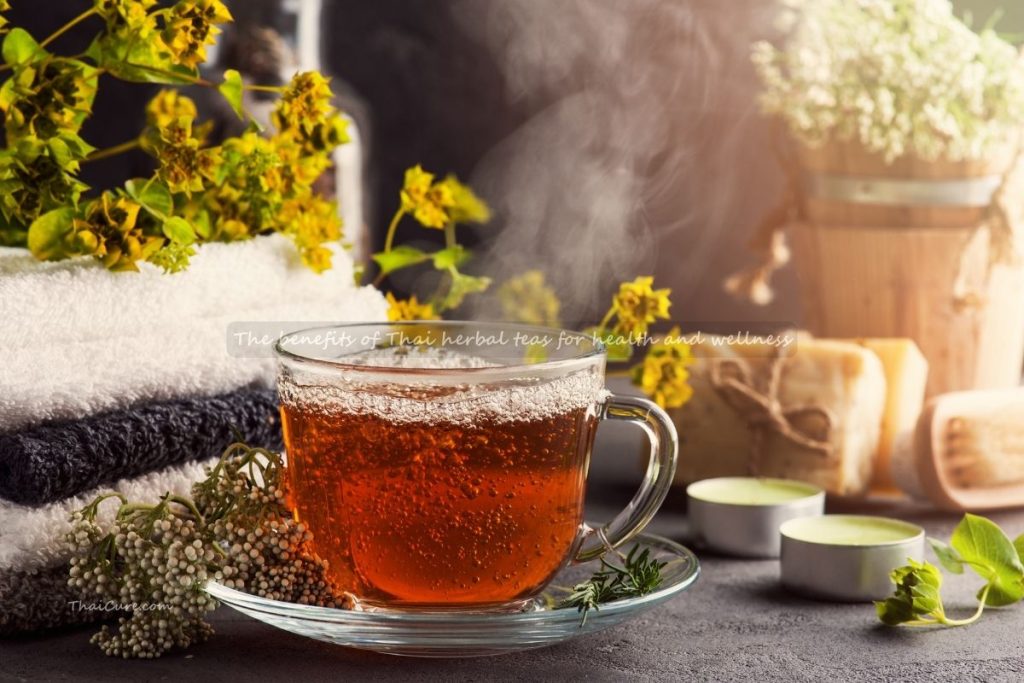
In this Ultimate Guide to Thai Herbal Teas, you’ll discover:
✅ The benefits of Thai herbal teas for health and wellness — from digestion to immunity, relaxation to radiant skin
✅ Step-by-step instructions on how to make authentic Thai herbal tea at home — no fancy tools required
✅ The rich herbal tea traditions in Thai culture and how Thai herbal teas are used in traditional medicine
✅ Where to source the authentic Thai tea ingredients list — plus top Thai herbal tea brands to try
In Thailand, herbal teas — known locally as nam cha samunphrai — are more than caffeine-free alternatives. They’re woven into the fabric of life: served at temple ceremonies, brewed by grandmothers for colds, sipped by office workers to beat the afternoon slump, and gifted to guests as symbols of hospitality and healing. And the best part? You don’t need to fly to Chiang Mai or Bangkok to experience their magic.
Whether you’re a wellness seeker, a tea lover, or a curious cultural explorer — pour yourself a cup. Let’s journey together into the heart of Thailand’s herbal heritage.
🌱 What Are Thai Herbal Teas? A Cultural & Botanical Primer
Thai herbal teas stand apart from Western or even Chinese herbal infusions. While Chinese herbal medicine often focuses on complex formulas for specific ailments, Thai herbalism — rooted in Ayurveda, animist traditions, and Buddhist practices — emphasizes balance, accessibility, and harmony with nature.
📜 A Sip Through History: The History of Herbal Drinks in Thailand
Long before “wellness” became a global buzzword, Thai villagers were harvesting wild herbs, boiling roots, and steeping flowers to treat everything from fever to fatigue. Ancient Thai medical texts, like the Tamra Phaet, document over 300 medicinal plants — many still used in teas today.
Royal courts refined these recipes, while Buddhist monks brewed calming infusions to aid meditation. Even today, you’ll find steaming pots of herbal tea at temple entrances, offered freely to visitors — a gesture of peace and purification.
🧺 The Authentic Thai Tea Ingredients List (Your Pantry Starter Kit)
Most Thai herbal teas rely on just a handful of fresh or dried botanicals. Here’s your essential starter list:
- Lemongrass — citrusy, cleansing, anti-inflammatory
- Ginger & Galangal — warming, digestive, immunity-boosting
- Turmeric Root — golden healer, antioxidant powerhouse
- Butterfly Pea Flowers (Nam Dok Anchan) — brain-boosting, stress-relieving, stunningly blue
- Roselle (Hibiscus) — tart, vitamin C-rich, blood pressure regulator
- Pandan Leaves — sweet, vanilla-like aroma, calming
- Bael Fruit — digestive tonic, cooling for hot climates
- Plai (Thai Ginger) — potent anti-inflammatory, muscle relaxant
💡 Pro Tip: Most ingredients are available at Asian grocers, online (try Etsy or Amazon), or even your local health food store. For the full experience, check out our guide on where to buy Thai herbal tea blends later in this post!
☕ Thai Herbal Tea vs Chinese Herbal Tea: What’s the Difference?
While both traditions are ancient and effective, Thai herbal teas tend to be:
- Simpler — often 1–3 main ingredients
- Daily-use friendly — designed for regular sipping, not just acute illness
- More aromatic & flavorful — meant to delight the senses as well as heal
- Caffeine-free — perfect for evening wind-down or all-day hydration
In fact, many caffeine-free Thai teas for relaxation — like pandan or butterfly pea — are sipped before bed to invite restful sleep.
🌺 Top 7 Thai Herbal Teas + Their Powerful Benefits
Let’s dive into the stars of the Thai herbal tea world. Each of these brews carries unique benefits of Thai herbal teas for health and wellness — backed by both tradition and modern science.
1. Nam Dok Anchan (Butterfly Pea Tea) — The Brain & Beauty Brew
🌸 Nam dok anchan (butterfly pea tea) benefits: Calms nerves, boosts memory, and — thanks to anthocyanins — fights oxidative stress for glowing skin.
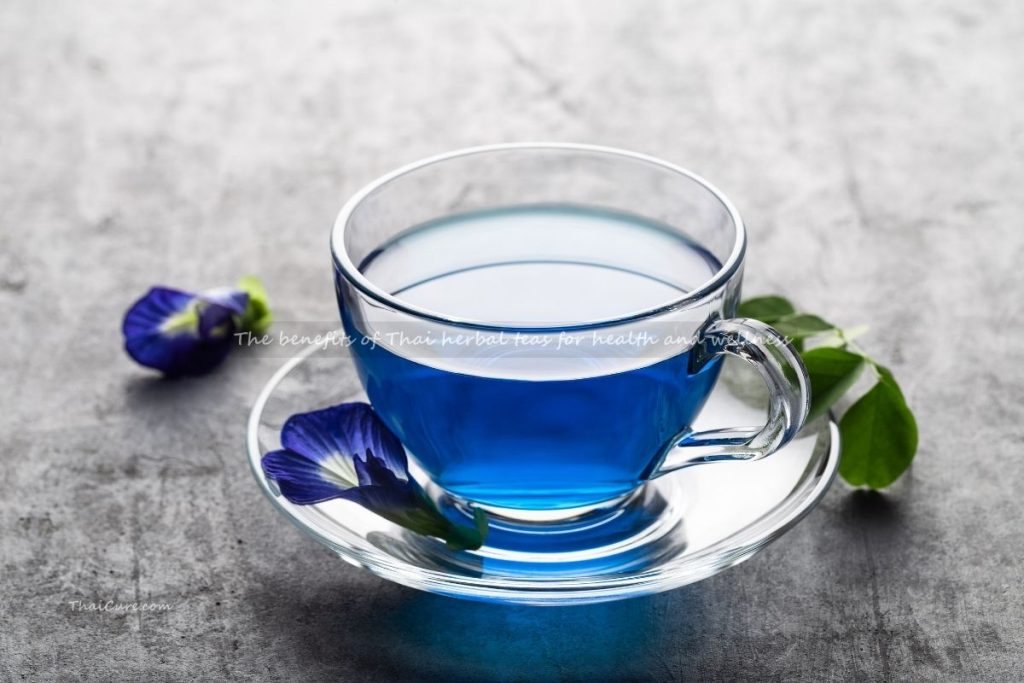
Sip this electric blue tea (turns purple with lime!) to unwind after work or prep for a big meeting. In Thai spas, it’s served post-massage to enhance relaxation.
2. Lemongrass-Ginger-Turmeric Elixir — The Immunity Trio
🍋 Lemongrass ginger turmeric tea benefits: Anti-inflammatory, detoxifying, and immune-strengthening. Perfect for flu season or post-workout recovery.
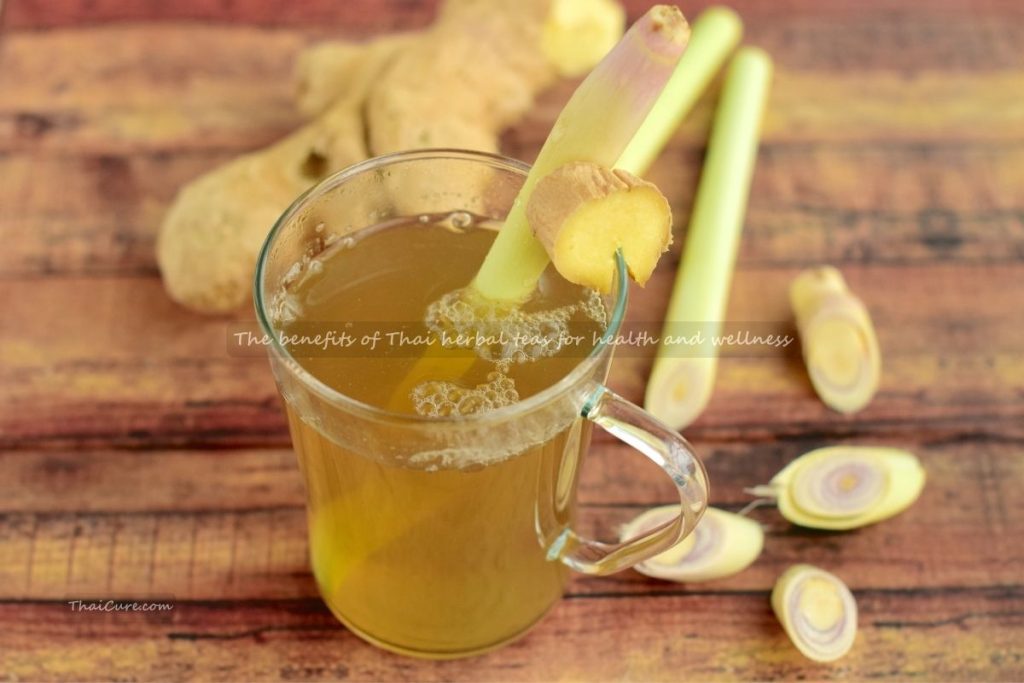
This golden brew is Thailand’s answer to “bone broth” — warming, fortifying, and deeply comforting. Add a spoon of raw honey and a squeeze of lime for extra zing.
3. Bael Fruit Tea — The Digestive Dynamo
🥥 Best Thai herbal teas for digestion: Bael fruit (or matoom) is revered for soothing IBS, bloating, and constipation. Its mild, apple-cinnamon flavor makes it easy to sip daily.
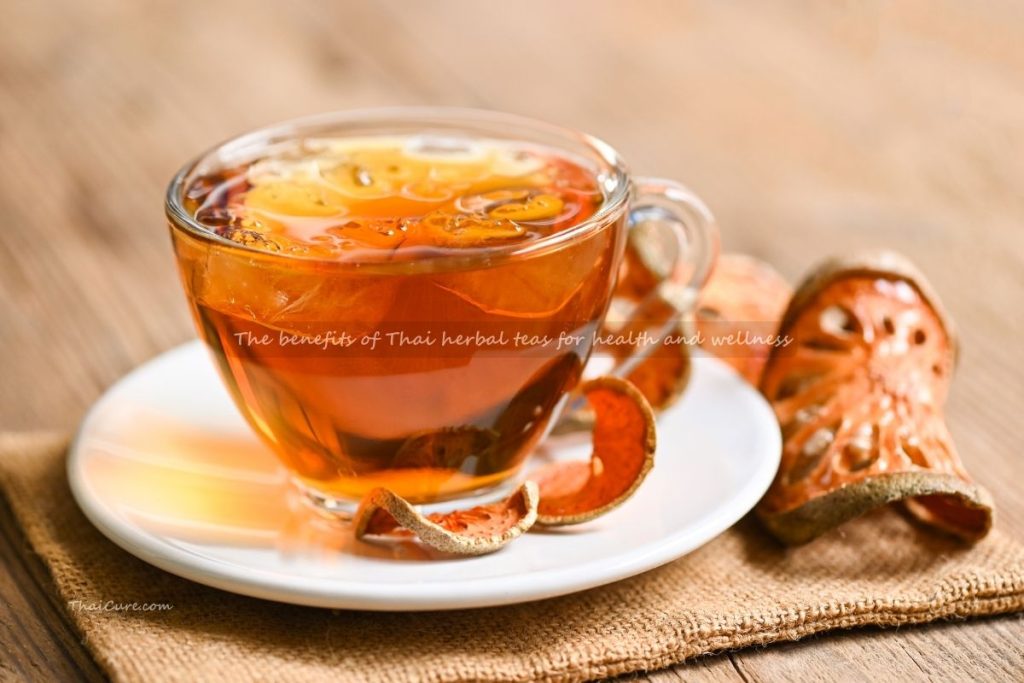
Often sold by street vendors in syrup form, homemade bael tea is gentler and free of added sugar.
4. Roselle (Hibiscus) Tea — The Heart Helper
❤️ Thai herbal tea for detox and immunity: Rich in vitamin C and antioxidants, roselle lowers blood pressure and supports liver health.
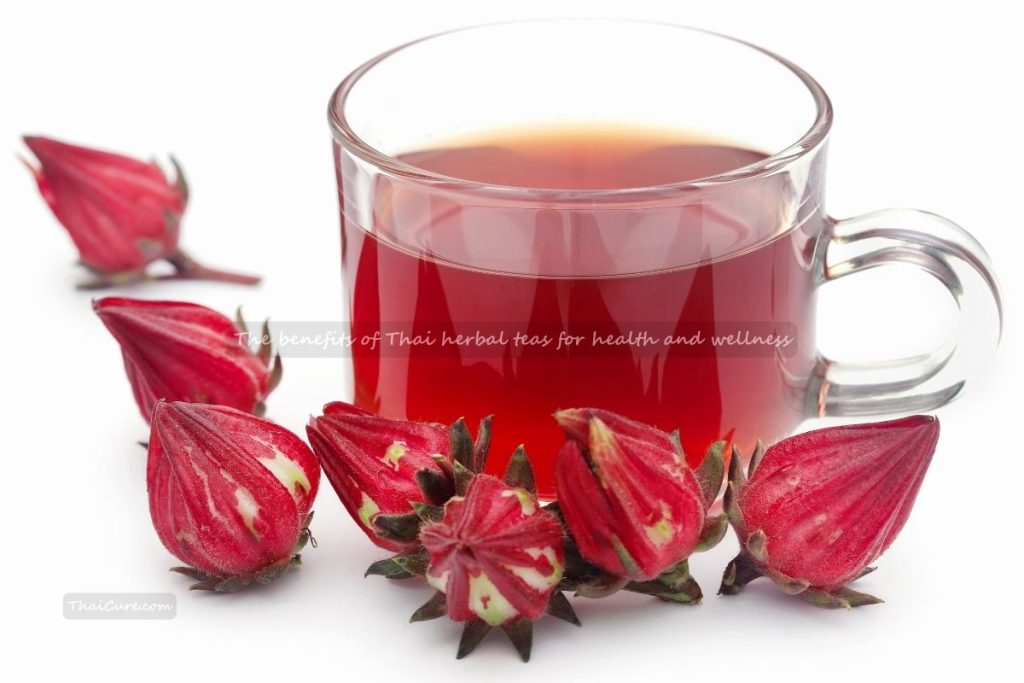
Served iced with a sprig of mint, it’s Thailand’s national summer cooler — and a delicious way to stay hydrated.
5. Pandan Leaf Infusion — The Stress Soother
🍃 Caffeine-free Thai teas for relaxation: Pandan’s sweet, vanilla-like aroma calms the nervous system. Often paired with jasmine or chamomile for bedtime bliss.
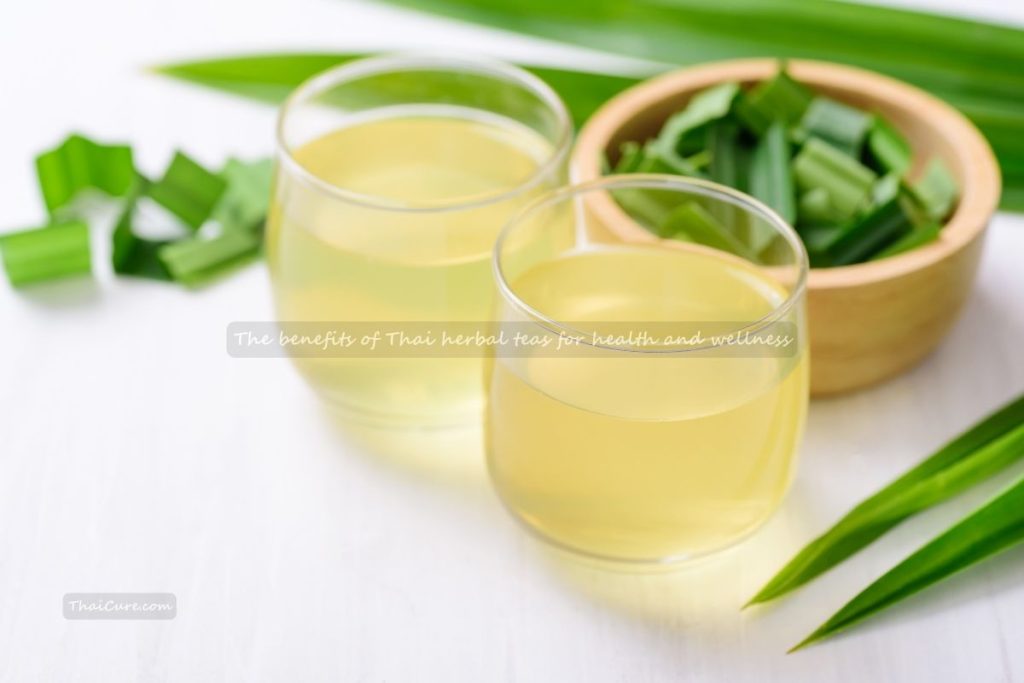
Pro tip: Tie pandan leaves in a knot before steeping — it releases more flavor!
6. Krachai (Fingerroot) Tea — The Joint & Muscle Mender
🧘♀️ Thai herbal tea for weight loss & inflammation: Krachai — a lesser-known rhizome — is a metabolic booster and natural pain reliever. Great post-yoga or after a long day on your feet.
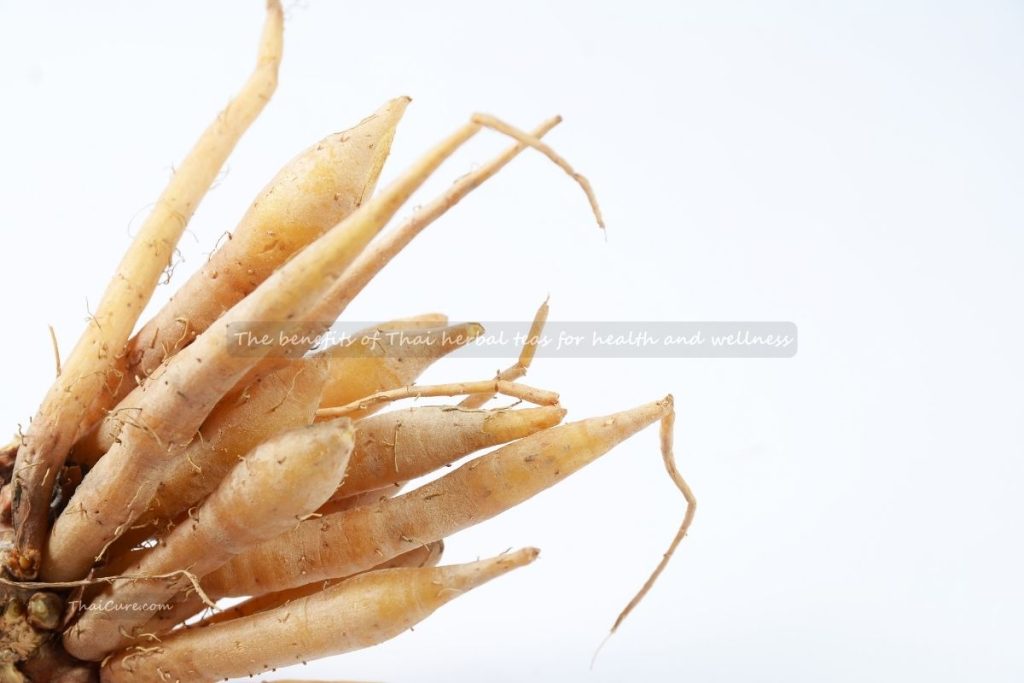
Strong flavor — best blended with ginger or lemongrass.
7. Plai + Turmeric Blend — The Pain Relief Potion
🌿 How Thai herbal teas are used in traditional medicine: Plai (Thai ginger) is Thailand’s secret weapon for muscle aches, arthritis, and menstrual cramps. Combined with turmeric, it’s nature’s ibuprofen.
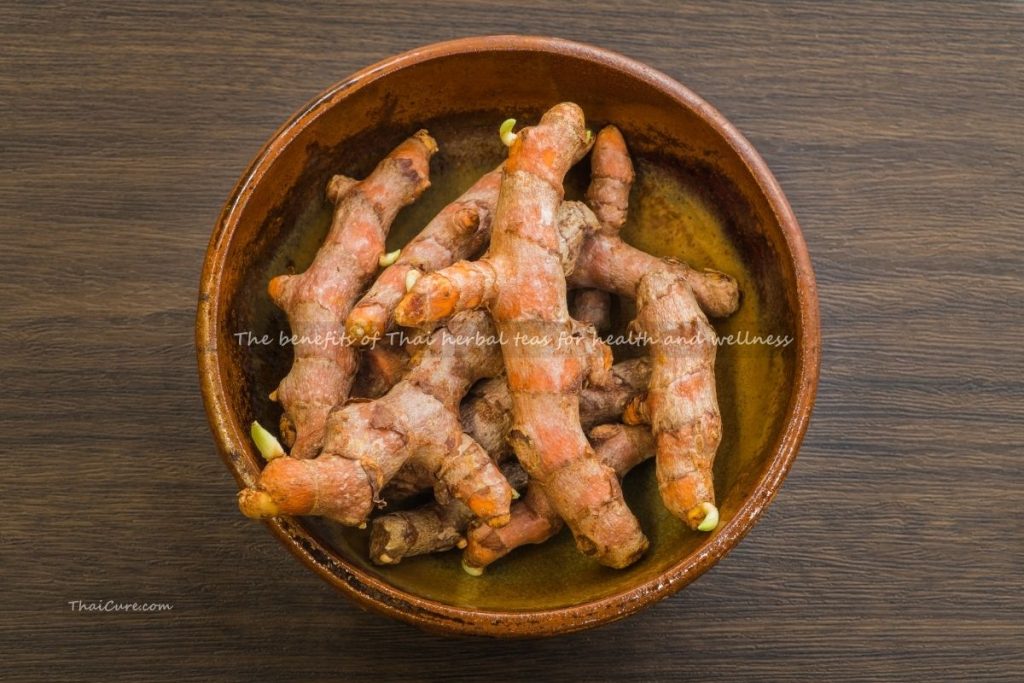
Brew strong, add black pepper to activate curcumin, and sip warm.
🫖 How to Make Authentic Thai Herbal Tea at Home (Step-by-Step!)
Ready to bring Thailand into your kitchen? Here’s your foolproof guide to how to make authentic Thai herbal tea at home — no mortar and pestle required.
🛠️ Tools & Ingredients You’ll Need
- Small saucepan or kettle
- Fine mesh strainer or tea infuser
- Glass jar for storage (optional)
- Fresh or dried herbs from your authentic Thai tea ingredients list
🛒 Where to buy Thai herbal tea blends: Try Thai markets, online shops like Temple of Thai, ImportFood, or Etsy sellers specializing in organic Thai herbs.
🍵 Recipe 1: Classic Hot Lemongrass-Ginger-Turmeric Tea (Serves 2)
Ingredients:
- 2 stalks lemongrass (bruised and chopped)
- 1-inch ginger, sliced
- 1-inch turmeric, sliced (or 1 tsp powder)
- 4 cups water
- Honey or palm sugar to taste
- Lime wedge (optional)
Instructions:
- Bring water to a boil. Add lemongrass, ginger, and turmeric.
- Simmer 15–20 minutes. Strain.
- Sweeten lightly. Squeeze lime to brighten flavor.
- Sip slowly — feel the warmth spread from throat to toes.
✅ This recipe embodies the lemongrass ginger turmeric tea benefits we adore — anti-inflammatory, soothing, and immune-awakening.
🧊 Recipe 2: Iced Butterfly Pea & Lemongrass Sparkler (Serves 4)
Ingredients:
- 10–12 dried butterfly pea flowers
- 1 stalk lemongrass, bruised
- 4 cups hot water
- Ice cubes
- Lime juice (to turn tea purple!)
- Honey or stevia
Instructions:
- Steep flowers and lemongrass in hot water for 10 mins. Strain and cool.
- Fill glasses with ice. Pour tea over.
- Add lime juice — watch the magic color shift!
- Sweeten to taste. Garnish with mint.
✨ Perfect for parties or hot days — a showstopper that’s also a brain-boosting, stress-busting tonic.
🍃 Recipe 3: Traditional Thai “Ya Hom” Detox Tea (Serves 1)
“Ya Hom” means “steamed herb” — a medicinal blend often used for cleansing.
Ingredients:
- 1 tsp dried bael fruit
- 1 tsp roselle
- ½ tsp ginger powder
- 1 pandan leaf (knotted)
- 2 cups water
Instructions:
- Simmer all ingredients 20 mins.
- Strain. Sip warm before meals.
- Use 2–3x/week for gentle detox.
🌿 This embodies Thai herbal tea for detox and immunity — a gentle reset for liver and digestion.
💡 Pro Tips for Perfect Thai Herbal Tea Every Time
- Steep longer for medicinal strength (15–30 mins), shorter for flavor (5–10 mins)
- Store dried herbs in airtight jars away from light
- Fresh is best — but frozen or dried work beautifully
- Sweeten wisely — palm sugar, honey, or monk fruit preserve benefits
- Reuse herbs? Sometimes! Lemongrass and ginger can be reboiled once
📝 Want these recipes in a printable PDF? [Download your free Thai Herbal Tea Recipe eBook here].
🙏 Thai Herbal Tea Traditions: Rituals, Seasons & Healing Wisdom
Thai herbal tea isn’t just consumed — it’s experienced. Rooted in animist beliefs, Buddhist mindfulness, and seasonal rhythms, these infusions carry deep cultural meaning.
🌞 Seasonal Sipping: Tea for Every Thai Climate
- Hot Season (March–June): Cooling roselle, chrysanthemum, or bael fruit iced teas
- Rainy Season (July–Oct): Warming ginger-turmeric blends to fight dampness and chills
- Cool Season (Nov–Feb): Spiced pandan or lemongrass to gently warm without overheating
🏯 Temple Offerings & Ceremonial Use
At Thai temples, you’ll often find large urns of herbal tea near entrances — free for all. It’s considered an act of tam boon (making merit) to offer tea to strangers. Butterfly pea tea, in particular, is offered during meditation retreats for its calming, clarity-enhancing properties.
👵 Grandma’s Medicine Cabinet
Ask any Thai elder about herbal tea, and they’ll have a story — and a remedy. Stomachache? Ginger and plai. Insomnia? Pandan and jasmine. Skin rash? Turmeric and tamarind. This generational knowledge — how Thai herbal teas are used in traditional medicine — is still alive in villages and city homes alike.
“In Thailand, we don’t wait until we’re sick to drink herbal tea. We drink it to stay well.” — Khun Yai (Grandma) Somsri, Chiang Rai
🛒 Where to Buy & Best Thai Herbal Tea Brands to Try
Not ready to forage your own herbs? No problem. Here are trusted sources and brands to get you started.
🌐 Online Retailers (Global Shipping)
- Temple of Thai — Authentic, ethically sourced, great starter kits
- ImportFood.com — Huge selection, bulk options, recipe guides
- Etsy — Search “organic Thai herbal tea” for small-batch artisans
- Amazon — Look for brands like “ChaTraMue Herbal” or “Doi Chaang”
🇹🇭 Top Thai Herbal Tea Brands to Try
- ChaTraMue Herbal Series — Famous for butterfly pea and lemongrass blends. Widely available.
- Doi Chaang Wellness Teas — Organic, hill-tribe sourced, stunning packaging.
- Pun Pun Center (Chiang Mai) — Seed-to-cup sustainability, medicinal focus.
- Tea Tang — Modern twists on classics, great gift boxes.
- Local Thai Markets — Check freezer sections for fresh herbs or pre-mixed sachets!
✅ Pro Tip: When buying, look for “no added sugar,” “organic,” and “single-origin” for maximum benefit.
🌅 Conclusion — Sip the Spirit of Thailand
Thai herbal teas are more than beverages. They’re gentle healers, cultural storytellers, and daily acts of self-care. Whether you’re drawn to the benefits of Thai herbal teas for health and wellness, eager to learn how to make authentic Thai herbal tea at home, or simply curious about the herbal tea traditions in Thai culture — you’ve taken your first sip into a world of botanical wisdom.
So light a candle. Boil some water. Steep your chosen herbs. And as the steam rises, imagine the Thai grandmothers, monks, and healers who’ve sipped these same brews for centuries — wishing you balance, peace, and vibrant health.
🌿 Every cup carries a blessing. Every sip, a story. Welcome to the ritual.
🧐 FAQs About Thai Herbal Teas
Q: What are the top benefits of Thai herbal teas for health and wellness?
A: They support digestion, reduce inflammation, boost immunity, promote relaxation, detoxify gently, and — when sipped mindfully — nourish mental well-being. Many are caffeine-free and safe for daily use.
Q: Can I make authentic Thai herbal tea at home without special tools?
A: Absolutely! All you need is a pot, water, herbs, and a strainer. We’ve shared 3 easy recipes above — no mortar, pestle, or Thai market required.
Q: Is Thai herbal tea caffeine-free?
A: Yes! Unlike Thai iced milk tea (which contains black tea), true herbal infusions like butterfly pea, lemongrass, or roselle are naturally caffeine-free — making them ideal caffeine-free Thai teas for relaxation.
Q: How is Thai herbal tea different from Chinese herbal tea?
A: Thai blends are simpler, more aromatic, and designed for daily enjoyment. Chinese herbal teas often use complex formulas targeting specific diagnoses and may taste more medicinal.
Q: Where can I find traditional Thai herbal tea recipes?
A: Right here! Plus, many Thai cookbooks like “Pok Pok” or “Thai Food Rules” include tea sections. Follow Thai herbalists on Instagram — many share free recipes daily.


